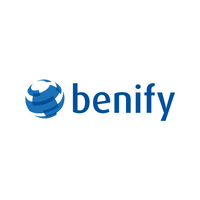How total reward statements help create greater employee awareness of their employer’s benefits investment
Total reward statements are fairly common among leading organisations worldwide. They help create greater knowledge, appreciation and transparency of rewards and benefits among employees.
A total reward statement puts together the total value of an employee’s compensation package, including salary, employee benefits, pension, insurances and other add-ons, such as bonuses.
Strategically, total rewards can be used to create greater employee awareness of their employer’s full investment and as a tool in both recruitment and retention.
However, the accuracy of an employee’s total reward statement depends on how often it is updated and whether it is dynamic or static.
Data is everything
While both dynamic and static formats are useful, the information needs to be accurate for an employee’s total reward to closely reflect their total compensation.
So, how is the information displayed on an employee’s total reward sourced, and where does the data come from? In the case of Benify’s platform, its total rewards solution collects data from primarily two sources:
1. Data generated on the Benify platform itself, for example, when an employee enrolls in a new benefit.
2. Data provided as a secure file from third-party systems, such as payroll.
As tech site GigaOm puts it: “Physical, digital, alive, inanimate — everything is a source of data just waiting to be processed and analysed.”
Total reward data points and frequency
Companies assign one or more platform administrators to manage the platform and to set the frequency for the data imports. Platform administrators can, for example, choose to import the file containing data from third-party systems annually, monthly, weekly or even daily.
Depending on how often the data from a third-party system is imported, employers can decide whether to provide employees with a monthly, quarterly or yearly total reward statement. Employees can then simply log in to their platform to view their current total reward anywhere, anytime, including on their smartphones via an app.
Platform administrators provide Benify with a secure, standardised import file, which usually contains several data points (essentially a single fact or piece of information). In the case of total rewards, examples of data may include employment start and end dates, paygrades, salary increases and benefits enrolments.
Once the file has been sent to Benify, the platform takes this information and uses it to produce an employee’s total reward.
On the importance of total rewards and data, Ulf Holmgren, global pricing and market access director at AstraZeneca says: “If we were only to offer or communicate net salary earnings, we wouldn’t have a chance in the UK or US. But if we can, for example, show how our pension is one of the best, then we are really competing with other employers.”
To learn more about total reward statements, download Benify's whitepaper.
Supplied by REBA Associate Member, Benify
Benify offers the market's leading global benefits and total reward platform.








